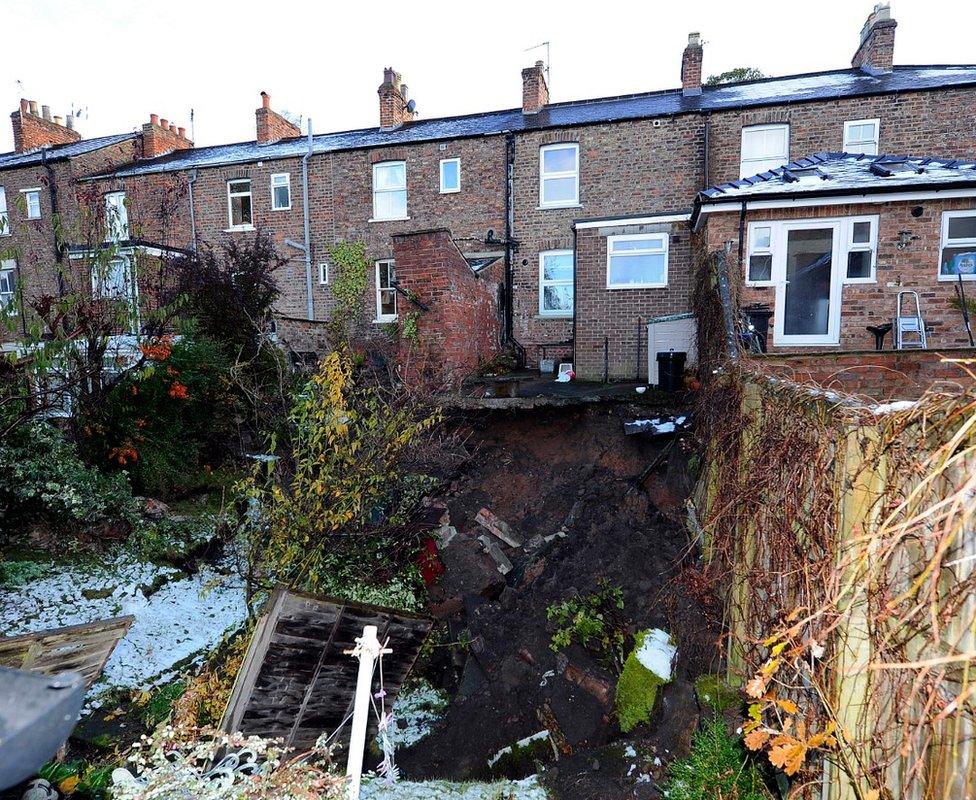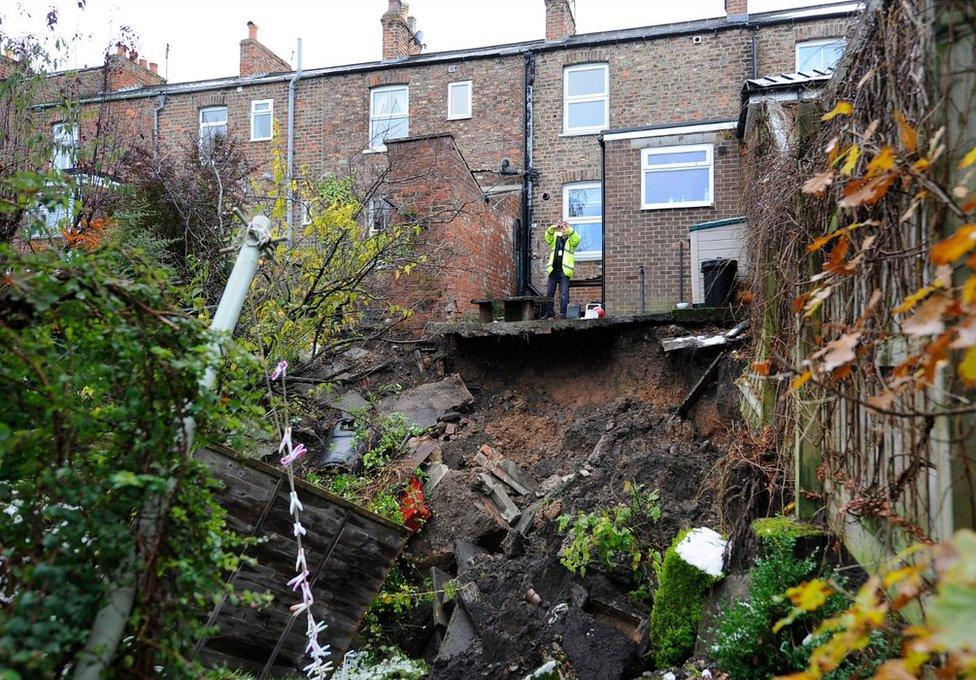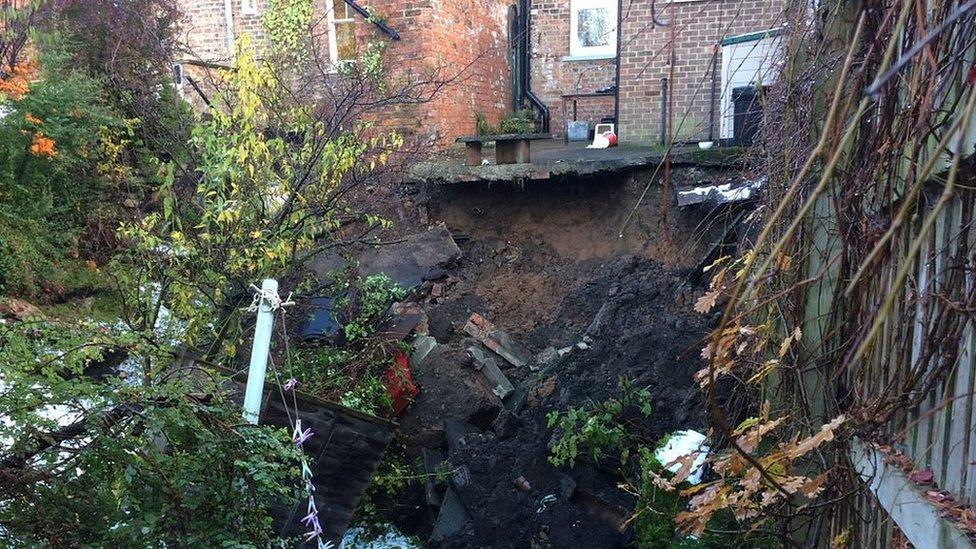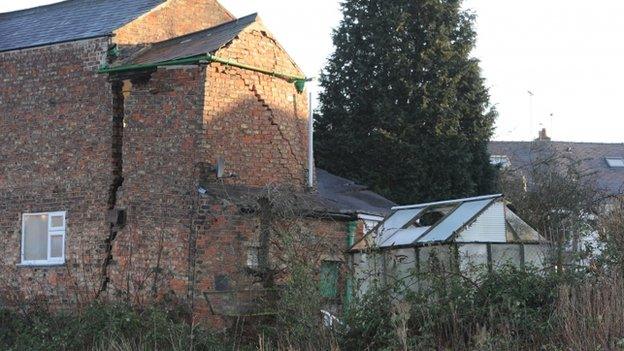Ripon sinkhole: British Geological Survey says area susceptible to holes
- Published

The back gardens of two homes on Magdalen's Road were the worst affected
A large hole that appeared behind a row of houses was in one of the UK's most susceptible areas for sinkholes, the British Geological Survey has said.
Twelve homes were evacuated after the hole opened in Ripon, North Yorkshire, at 22:30 GMT on Wednesday.
The hole measured about 20m (66ft) by 10m (33ft) and 9m (30ft) deep.
The BGS said Ripon lies in one of the most susceptible areas of the UK for sinkholes because of its "Permian gypsum deposits".
It said these can dissolve more quickly than surrounding limestone, leading to the enlargement of underground caves.

Twelve properties on the row of terraced housing were evacuated
Experts are still examining data from the site behind the houses in Magdalen's Road but, releasing its initial findings, the BGS said sinkholes were often caused by surface water penetrating the ground, or fluctuations in groundwater levels.
In 2014, a 100-year-old detached house in an adjoining street was demolished after a 25ft-wide (8m) sinkhole opened.
According to the report, external, the wider area of Ripon periodically encounters sinkholes and in the 1980s and 1990s a hole was appearing every two to three years.

The sinkhole caused extensive damage to two gardens and caused a sewer pipe connected to the terrace to collapse
No-one was injured in the latest collapse with the back gardens of two properties the worst affected.
A sewerage system connected to several of the properties on the terrace fell in as the hole appeared.
One resident described seeing the ground moving and finding her steps leading into the garden had gone.
On Friday, further cracks appeared in the ground and on walls at the site.
Ben Cairns, North Yorkshire Fire Service station manager, said: "Our main concern at the moment is what impact the weather is going to have for the next few days."
The BGS is continuing to analyse data from the site.
- Published11 November 2016

- Published10 November 2016

- Published5 March 2014

- Published18 February 2014

- Published18 February 2014